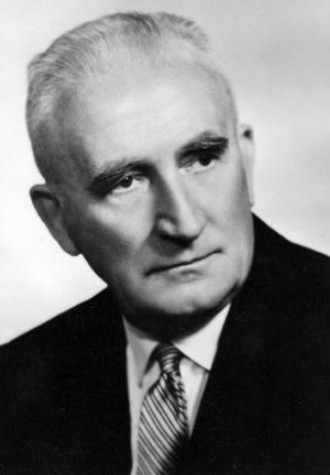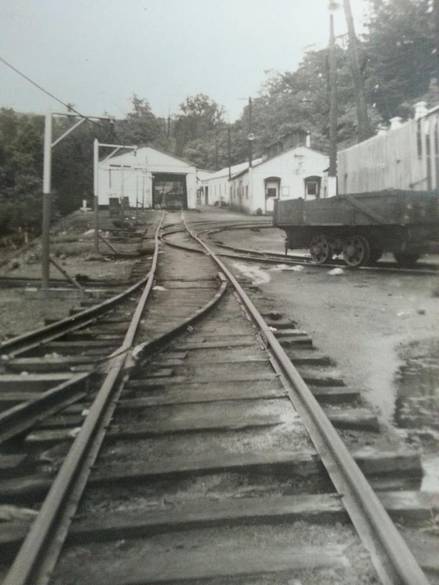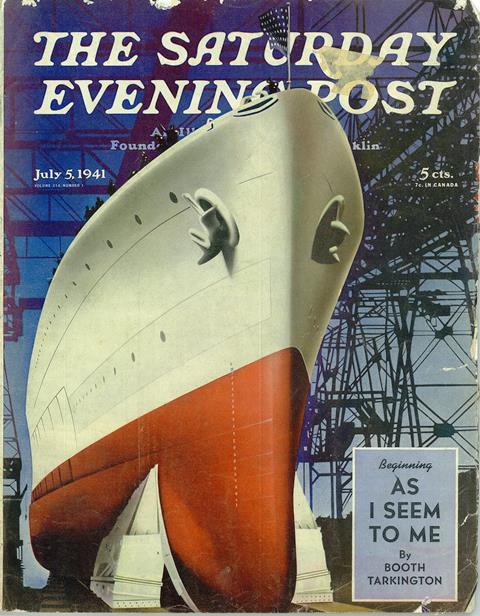Saturday 5 July 1941
 |
| German troops on BMW R75 motorcycles advancing into Russia, June/July 1941 (Mossdorff, Federal Archive). |
Despite the weather and everything the Soviets can throw at them, though, the Germans remain on schedule to end the war before the winter. OKH boss General Franz Halder notes in his war diary that "The entire front is advancing in accordance with our intentions."
In the Far North sector, it is a quiet day. On the Litsa River sector, General Dietl's Army of Norway is trying to expand a small bridgehead across the river but has little success. The Soviets land a naval battalion along the coast to distract the Germans.
Further south, Operation Arctic Fox, the projected advance to the Murmansk railway line via Salla, is stalled as the Germans bring up troops from the south. Luftflotte 5 is standing by to assist a major eastward push on the 6th. There are some minor Finnish probing attacks that capture Repola. In Karelia, the Finns also make some minor attacks to improve their starting positions for later actions.
General Halder allows himself some rare strategic criticism in his war diary about the Army of Norway Operations. He comments about the "dubiousness of this entire Murmansk operation, which serves only political ends and is open to gravest exposure from the operational point of view."
 |
| Germans taking Soviet citizens to transit camps, Minsk, 5 July 1941 (Weidner, Federal Archives, Bild RH 82 image-00064). |
In the Army Group North sector, General Hoepner's panzers are eliminating pockets of resistance while the German infantry closes up. The Germans are now approaching Lake Peipus, Reval, and Parun. The front is getting very close to Leningrad already. In desperation, the Soviets counterattack between Ostrov and Pskov and stall the German advance.
In the Army Group Center sector, the Soviets are preparing a riposte by V and VII Mechanized Corps of the 20th Army. They plan to attack the German 39th and 47th Panzer Corps. The Germans are blissfully unaware, but so far they have been able to handle everything the Soviets can throw at them. On the right flank, General Model's panzer division maintains its bridgehead at Rogachev. In the central axis of advance between the Beresina and Dneipr Rivers, General Guderian's 2nd Panzer Group makes little headway. On the left flank, General Hoth's 3rd Panzer Group takes a second bridgehead at Ulla.
In the Army Group South sector, the Soviets are retreating. OKW chief General Franz Halder writes in his diary that "Our troops have more or less lost contact with the enemy on the front of Seventeenth and Sixth Armies." The Soviets are preparing for the defense of Kyiv, where they propose to make a stand. The Romanians take Chernivtsi.
 |
| Finnish pioneer troops with a flamethrower, 5 July 1941 (SA-Kuva). |
Royal Navy light cruiser HMS Ajax and HMAS Perth, anti-aircraft cruiser Carlisle and accompanying destroyers bombard Damour during the day in preparation for the Australian offensive. They return at night to patrol the coast.
European Air Operations: RAF Bomber Command targets railway yards in Muenster (47 bombers) and a power station in Bielefeld, Germany (46 bombers). After dark, RAF Bomber Command sends 109 bombers against Brest. German night fighters are active and down seven RAF bombers. Ofw. Wilhelm Beier of 3./NJG 2 downs two bombers, a Wellington and a Blenheim for his seventh and eighth victories.
RAF Fighter Command organizes a Circus against the Fives works at Lille. The defending Luftwaffe squadrons, JG 2 and 26, claim 13 victories. Among those filing claims is Paul Galland, younger brother of Adolf Galland, who scores his first victory.
The Luftwaffe sends a night raid against Great Yarmouth, Norfolk.
 |
| Ruins in Minsk, 5 July 1941 (Weidner, Federal Archives, Bild 146-2008-0151). |
Battle of the Baltic: Latvian 3204-ton freighter Rasma hits a mine north of Ekholm. The mines had been laid by Finnish submarine Vesihiisi on 23 June. The Rasma's master beaches the ship to prevent it from sinking, but subsequent German attacks on the 10th destroy it.
Soviet patrol boat MO-209 hits a mine and sinks off Gogland Island.
 |
| Russian prisoners at Minsk, 5 July 1941 (Weidner, Federal Archives, Bild 146-1991-060-36A). |
Three corvettes then attack U-96. The depth charge attack damages the U-boat enough that it must return to port.
Royal Navy submarine HMS Tigris torpedoes and sinks Italian submarine Michele Bianchi near Bordeaux in the Bay of Biscay. There are no survivors, all 57 crew perish.
The Luftwaffe bombs and sinks Royal Navy auxiliary paddlewheel minesweeper Snaefell about 8 miles off Sunderland. The only death is the master, Lt. Commander F. Brett, while two other crew are wounded.
The Luftwaffe bombs and sinks 470-ton British freighter Fowey Rose in St. George's Channel off St. Davids. There are 8 deaths.
The Luftwaffe attacks Greenrock and damages two Royal Navy submarines being built at the Scotts yard, HMS Traveller, and Trooper.
The RAF bombs and sinks Norwegian coaster Advance off Vågsøy, Norway.
Swedish 2241-ton freighter Stig Gorthon hits a mine and sinks off Borkum. Everyone survives.
Royal Navy destroyer HMS Holderness hits a mine in the North Sea. The Holderness makes it back to port and is out of commission for 26 days.
U-103 (Korvkpt. Victor Schütze), on its 4th patrol out of Lorient, secretly refuels from 7747-ton German tanker Charlotte Schliemann in Las Palmas. Charlotte Schliemann embarked from Aruba in 1939 and sits in the harbor of Las Palmas refueling U-boats while pretending to be interned.
Australian minesweepers HMAS Cairns and Wollongong are launched.
Canadian corvette HMCS Drumheller is launched in Collingwood, Ontario.
United States destroyer USS Frazier is laid down.
U-133 (Oberleutnant zur See Hermann Hesse), U-208 (Oberleutnant zur See Alfred Schlieper), and U-654 (Korvettenkapitän Hans-Joachim Hesse) are commissioned, U-136, U-355, and U-754 are launched, U-197 is laid down.
 |
| Refugees in Minsk, 5 July 1941 (Weidner, Federal Archives, Bild 146-1980-027-03). |
British 5920-ton freighter Bencruachen hits a mine and sinks near Mex High Light in Alexandria Harbour. There are three deaths. The Bencruachan takes down with it 31-ton motor yacht Wyreema.
The RAF bombs Palermo, Sicily.
The Luftwaffe bombs Alexandria (15 bombers) and Tobruk.
The Italians bomb Hamrun, Malta after dark. There are 14-20 deaths, with 19 injured. Six houses are destroyed and water mains are damaged. In air battles, both sides lose planes.
Peruvian/Ecuadorian War: A border war breaks out between Peru and Ecuador. The long-standing dispute stems from Ecuador's claim that its territory extends beyond the Andes Mountain Range to the Amazon River. How the war starts is hotly disputed, but some witnesses claim that Ecuadorian troops invade Peruvian territory in the Zarumilla province. Other witnesses claim that Peru invaded Ecuador due to a series of incidents along the border that the Peruvian government took to be provocations.
In any event, a small party of Ecuadorian troops quickly takes the Peruvian town of Aguas Verdes. Other Ecuadorian troops soon follow, and then the Peruvian government sends its own troops. The Peruvian troops quickly eject the Ecuadorian troops from their territory. Fighting soon spreads all along the border, and the Peruvian military has an early advantage due to the presence of more troops and advances into Ecuador's El Oro province.
The other American countries have no patience for any border wars during this time of international crisis. Brazil, Argentina, and the US quickly arrange a cease-fire.
 |
| Andrii Melnyk. |
Polish/Soviet Relations: Polish government-in-exile leader Sikorski meets with Soviet Ambassador Maisky to discuss re-establishing diplomatic relations.
US/Japanese Relations: Future Tokyo Rose propagandist Iva Toguri arrives in Tokyo to visit relatives.
 |
| P. K. Mines in Clarksburg, West Virginia. This photo was taken July 5, 1941, by coal miner Clyde Lake (Clarksburg, WV gallery). |
German Government: According to "Hitler's Table Talk," Hitler discusses plans to make the Crimea the "German Riviera." He plans to create autobahns from Germany to the Crimea because "Better than the railway, which has something impersonal about it, it's the road that will bring people together."
British Government: Oliver Lyttelton takes up his new post of British Minister in the Middle East.
Greenland: US Navy transports USS Munango and USAT Chateau Thierry arrive at Tungugdliarfik Fjord to begin construction of an airbase at Narsarssuak.
American Homefront: At Yankee Stadium, Joe DiMaggio goes 1-4 against Philadelphia Athletics pitcher Phil Marchildon. This extends his major league record hitting streak to 46 games.
Warner Bros. releases "Kisses for Breakfast," starring Dennis Morgan and Jane Wyatt. This is a comedy about bigamy, which comes about because Morgan's character gets a case of amnesia.
 |
| The Saturday Evening Post, July 5, 1941 (Cover: B. Tarkington). |
July 1941
July 1, 1941: US TV Broadcasting Starts
July 2, 1941: MAUD Report
July 3, 1941: Stalin Speaks
July 4, 1941: Pogroms in Eastern Europe
July 5, 1941: Germans on Schedule
July 6, 1941: Australians Attack Damour
July 7, 1941: US Marines in Iceland
July 8, 1941: Flying Fortresses In Action
July 9, 1941: British Take Damour
July 10, 1941: Sword and Scabbard Order
July 11, 1941: Cease-fire in Syria and Lebanon
July 12, 1941: Anglo/Russian Assistance Pact
July 13, 1941: Uprising in Montenegro
July 14, 1941: Katyusha Rocket Launchers in Action
July 15, 1941: Smolensk Falls
July 16, 1941: Stalin's Son Captured
July 17, 1941: Heydrich Orders Mass Executions
July 18, 1941: Twin Pimples Raid
July 19, 1941: V for Victory
July 20, 1941: The Man Who Wouldn't Shoot
July 21, 1941: Moscow in Flames
July 22, 1941: Soviet Generals Executed
July 23, 1941: Secret Plan JB 355
July 24, 1941: Operation Sunrise
July 25, 1941: US Naval Alert
July 26, 1941: Italian E-Boat Attack on Malta
July 27, 1941: MacArthur Returns
July 28, 1941: Auschwitz Exterminations
July 29, 1941: Rescue From Crete
July 30, 1941: Raid on Petsamo and Kirkenes
July 31, 1941: Final Solution Order
2020
No comments:
Post a Comment